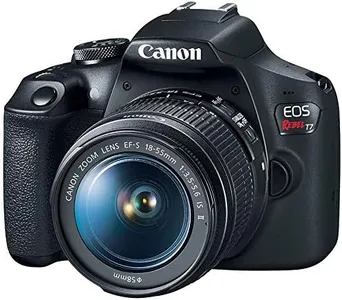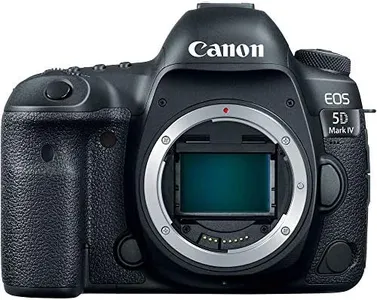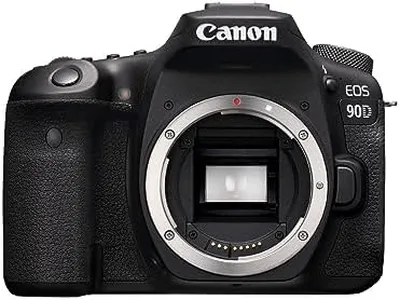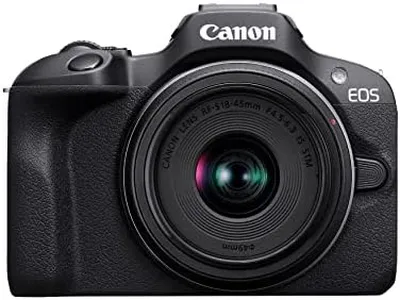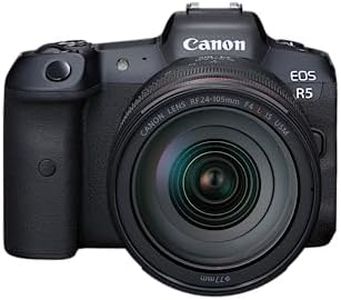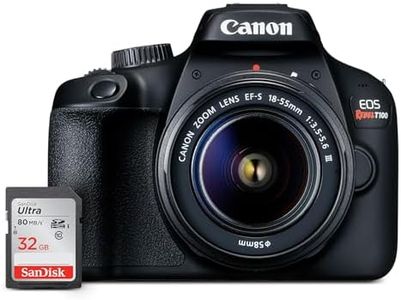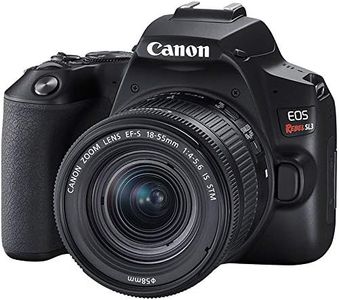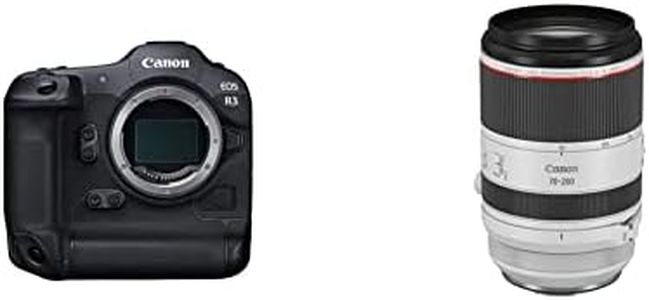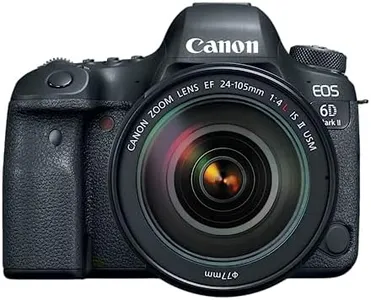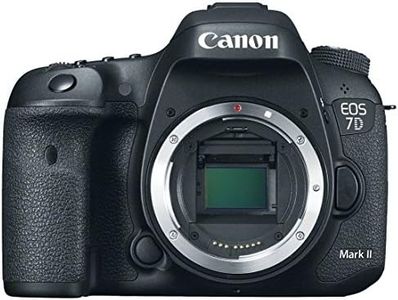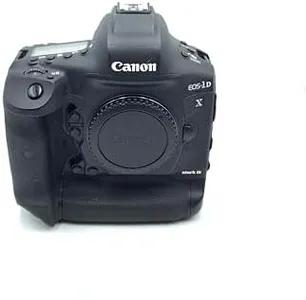10 Best Canon Dslrs 2025 in the United States
Our technology thoroughly searches through the online shopping world, reviewing hundreds of sites. We then process and analyze this information, updating in real-time to bring you the latest top-rated products. This way, you always get the best and most current options available.

Our Top Picks
Winner
Canon EOS Rebel T7 DSLR Camera with 18-55mm Lens | Built-in Wi-Fi | 24.1 MP CMOS Sensor | DIGIC 4+ Image Processor and Full HD Videos
The Canon EOS Rebel T7 is a solid entry-level DSLR that’s perfect for beginners and those looking to step up their photography game. With a 24.1 MP APS-C sensor, it delivers impressive image quality, particularly in well-lit environments. The camera's 9-point autofocus system is decent for casual photography, but may struggle in low light or fast-moving subjects compared to more advanced models. Its continuous shooting speed of 3 frames per second is modest, which might limit action shots, but is generally suitable for stills and slower-paced scenes.
One of the standout features is the built-in Wi-Fi and NFC, making it easy to share your photos wirelessly. A 3-inch LCD screen is helpful for framing shots, although it lacks a tilting or articulating feature that can be useful for creative angles. The camera also supports Full HD video recording, which is a nice bonus for those wanting to dabble in videography.
In terms of build quality, the Rebel T7 feels sturdy and comfortable to hold, making it a good choice for longer shooting sessions. However, it does lack weather sealing, so it’s not ideal for shooting in harsh conditions. The battery life is impressive, allowing for around 500 shots per charge, which is great for day-long outings. Compatibility with Canon EF and EF-S lenses provides users a wide range of options for lenses, enhancing its versatility. The absence of advanced features like 4K video and a more complex autofocus system can be a drawback as you progress in photography skills.
Customer Highlights
A summary of real customer reviews to highlight what shoppers are saying!Canon EOS 5D Mark IV Digital SLR Camera (Body Only), Full-Frame DSLR Camera, 30.4 Megapixel CMOS Sensor, 4K Video, Content Creator Camera, EF Mount, Black
The Canon EOS 5D Mark IV stands out as a robust choice for photographers and videographers looking for high-quality imagery and video capabilities. With a 30.4 megapixel full-frame sensor, it excels in low-light conditions and produces stunning images with great detail. The camera's ISO range of 100-32000, expandable up to 102400, allows for flexibility in various lighting environments, making it suitable for both indoor and outdoor shooting. One of its key strengths is the advanced Dual Pixel CMOS AF, providing fast and accurate autofocus, especially useful in video recording and live view shooting. It also supports 4K video at 30 fps and has a continuous shooting speed of 7 fps, which is beneficial for capturing action shots.
However, there are a few drawbacks to consider. The camera's weight (around 1.24 kg) may be cumbersome for those needing a lightweight option for travel or long shooting sessions. While it offers a range of connectivity options, such as built-in Wi-Fi for easy sharing, it lacks more modern features like Bluetooth, which could enhance user experience. Additionally, the absence of in-body image stabilization might be a downside for handheld video shooting, although it can still be mitigated with compatible lenses that offer stabilization.
On the ergonomics front, the camera features a capacitive touchscreen, making it user-friendly for navigating settings and functions. Compatibility with a wide range of Canon EF and EF-S lenses adds to its versatility. This camera is ideal for professional photographers and content creators who need reliable performance and high-quality output, though beginners may find it a bit overwhelming due to its extensive features and settings.
Customer Highlights
A summary of real customer reviews to highlight what shoppers are saying!Canon DSLR Camera [EOS 90D] with Built-in Wi-Fi, Bluetooth, DIGIC 8 Image Processor, 4K Video, Dual Pixel CMOS AF, and 3.0 Inch Vari-Angle Touch LCD Screen, [Body Only], Black
The Canon EOS 90D boasts a high-resolution 32.5 Megapixel APS-C sensor, making it an excellent choice for those looking to capture detailed and vibrant images. Its DIGIC 8 image processor ensures fast performance, and the camera supports up to 10 frames per second (fps) continuous shooting, ideal for capturing fast-moving subjects. The 45-point all cross-type autofocus system is robust, ensuring accurate focus even in challenging conditions, and it supports up to 27 points with an f/8 metering, which is beneficial for wildlife and sports photography.
The camera can shoot 4K UHD video at 30P and Full HD at 120P, making it a versatile option for both photographers and videographers. The 3-inch vari-angle touch LCD screen is user-friendly and facilitates shooting from various angles, adding to its flexibility. Built-in Wi-Fi and Bluetooth enable easy sharing and remote control via a smartphone, enhancing its connectivity options.
However, the EOS 90D lacks built-in image stabilization, which may require users to rely on lenses with stabilization features for handheld shooting. The camera is not water-resistant, so it's less suited for extreme weather conditions. Additionally, it's a body-only package, so users will need to purchase lenses separately. Despite these drawbacks, the Canon EOS 90D is a solid mid-range DSLR, excelling in image quality, speed, and video capabilities, making it well-suited for enthusiasts and semi-professional photographers looking for a reliable and versatile camera.
Customer Highlights
A summary of real customer reviews to highlight what shoppers are saying!Buying Guide for the Best Canon Dslrs
When choosing a Canon DSLR, it's important to consider your specific needs and how you plan to use the camera. Whether you're a beginner, an enthusiast, or a professional, understanding the key specifications will help you make an informed decision. Here are some of the most important specs to consider when selecting a Canon DSLR.FAQ
Most Popular Categories Right Now
